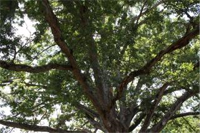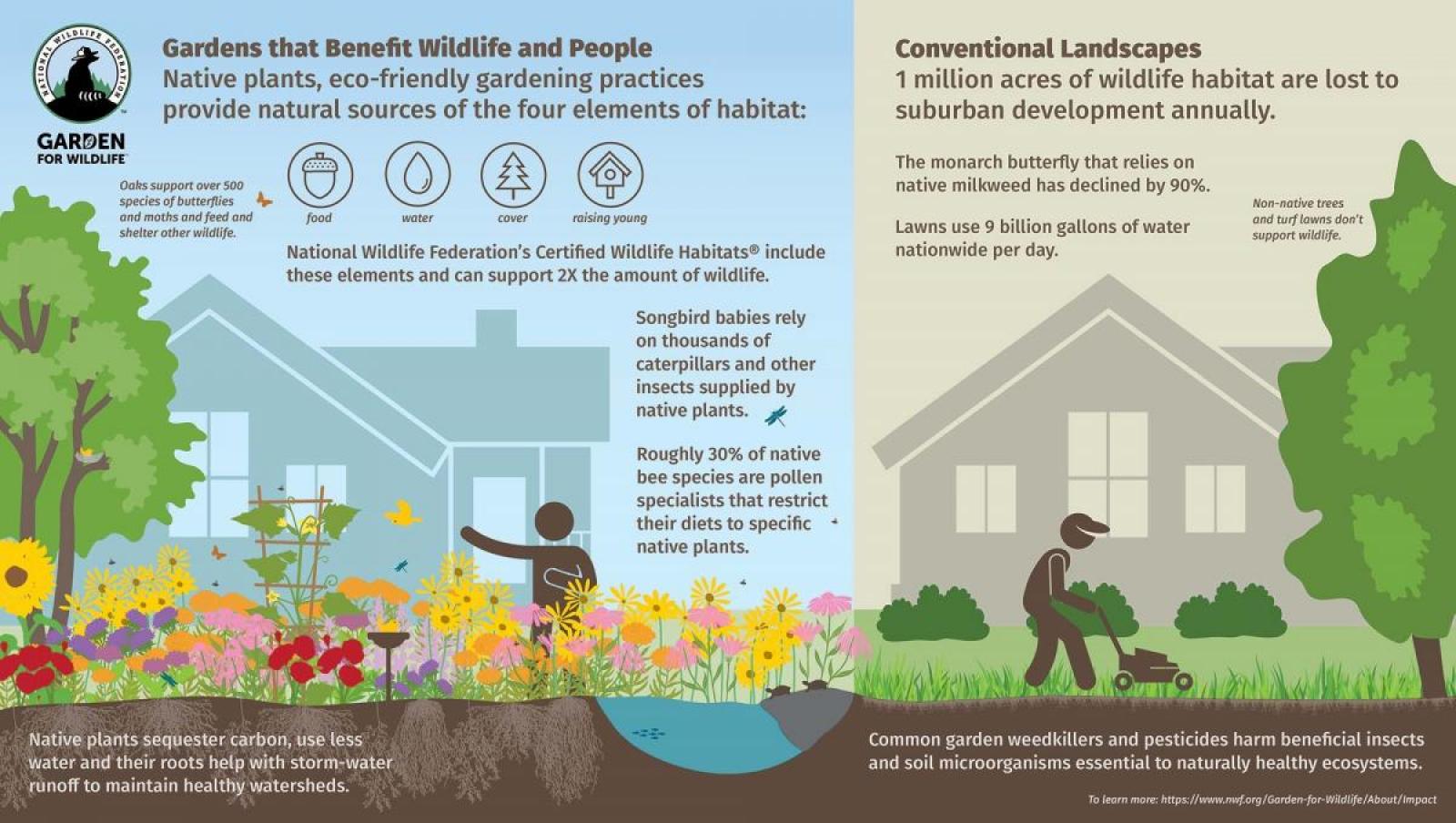Preserve Our Ecosystem with Native Plants

When you look for trees to plant on your property, does habitat value factor into your decision?
The Ferguson Township Tree Commission maintains a list of trees residents can refer to for this purpose. Specifically, the list emphasizes native trees and plants to be planted within our shared landscapes.
Collectively, our landscaping decisions help or hurt the ecosystem services we rely upon…

What are native plants? Native plants and trees are generally classified as species known to pre-date European colonization on the American continent. Among many ecosystem residents, our native hummingbirds, bees, butterflies have evolved to rely on these plants for shelter and nutrients during breeding and hibernation periods throughout the year.
Why are native plants receiving attention? When land is converted to urban, suburban, and agricultural purposes, these landscapes can become degraded, with loss of natural areas and transition to plant species native organisms did not evolve with. Pollinators have farther to travel. Turtles and frogs may no longer be able to recognize these altered ecosystems as home. As human populations move into new footholds, organisms sharing our ecosystem are at risk of losing theirs. Invasive as well as non-native plants, and treed lawns have an aesthetic we may have come to view as beautiful. But this visual beauty may ultimately be superficial and depleting ecosystems we depend on.
By analogy, in a similar way that we or our children may wish to have sweets for all our meals, we are cautious not to overindulge because of the long-term impact on our health. The same applies to ecosystem health. Rejuvenating and safeguarding the health of our surrounding ecosystems relies upon our choices. Invasive trees and plants may be attractive for our landscaping ideals with few pests to diminish their attractiveness. However, these same non-native species attractive for landscaping have other characteristics that let them easily spread, sometimes exponentially, outcompeting the native plants that should be occupying the space, and contributing to a scarcity of resources to our native wildlife and insects. Non-native plants may look appealing but only to humans, not to our plant and animal neighbors who must seek out food and shelter in altered (sub)urban and agricultural environments.
How you can help. If you are looking for gifts to commemorate special occasions among family and friends, want to increase the tree cover on your property, or diversify the habitat in your area, consider supporting local habitats as well as nurseries by investing in native trees and plants. The Ferguson Township Tree List can help you identify species that should do well in our area, as well have attractive and ecological attributes desirable for landscaping. The tree list was prepared by arborists and forestry professionals knowledgeable about Ferguson Township and the surrounding areas.
Resources:
- Learn more about trees in Ferguson Township here.
- View our Ferguson Township Official Plant List.
- Contact the Ferguson Township Tree Commission if you are looking for more details on specific plants or resources suitable for other regions.
- If you're ready or simply curious to do your part by converting turf grass to trees or meadow, DCNR offers technical assistance throughout the state, click here.

